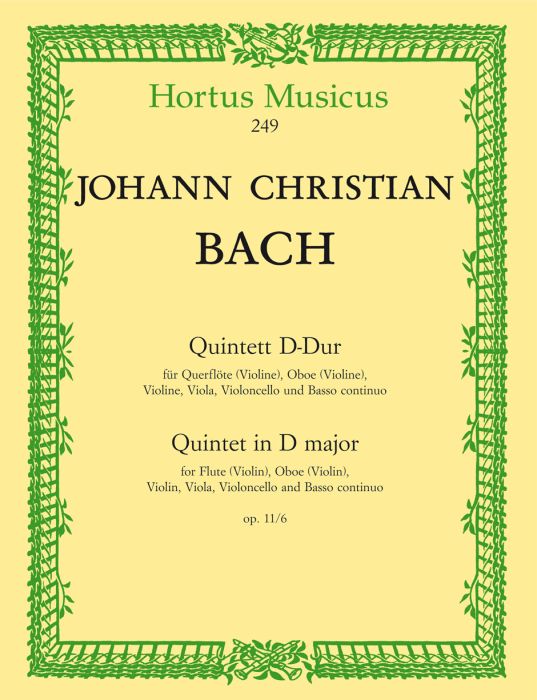Want to be the first to hear latest news and find out about our exclusive promotions.
Sign Up for Our Newsletter:
Quintet in D major Op.11/6
Christian Bach, Johann
J C Bach Quintet in D major Op.11/6 (Score & parts)
for flute (violin), oboe (violin), violin, viola, cello & basso continuo (pianoforte, cembalo)
Among the most charming works of their time are the quintets Johann Christian Bach wrote in London during the summer of 1776. Johann Christian, born in 1735, was the youngest son of Johann Sebastian Bach and was then employed as music director to the Queen of England. The works, published in London by Welcker as Opus 11, were dedicated to the Prince Elector Karl Theodor von der Pfalz, who had aleady commissioned a second opera from Bach for his residence in Mannheim. The quintets - the present Quintet in D major whose brightness and liveliness reflect the spirit of its key, is the sixth of the group - are performers' music in the true sense of the word, works which give the performers greater freedom than those of the later Classical era.
Although early prints mention that violins can be used instead of the flute and oboe, these indications were probably due to the publisher's marketing strategy rather than to the composer, who conceived each part with its particular tone color. The quintets can be played by a solo ensemble as well as by a chamber orchestra; but basically, they are better suited to the former setting than the latter. The melodies should be played with a certain freedom - not in the sense of a florid ornamentation resulting from the use of "wesentliche Manieren" or "essential ornaments" which noticeably alter the melody, but rather in the sense of a performance style enhanced by legato or staccato playing.
Finally, the thoroughbass can either be played on a pianoforte - which is perhaps best suited to this music when played with taste and tact -, on a harpsichord, or omitted altogether (the thoroughbass figures are missing
in one of the early prints). Johann Christian Bach was incontestably one of the most eminent composers of the declining thoroughbass period. Even if he did not quite abandon the old usage, and even if the figured bass was added by someone else at the behest of the publisher - which is intimated by certain peculiarities - this figured bass should be performed in a different, much freer manner than a comparable bass by his father, for example. The realisation in the score is intended as a suggestion for such an interpretation.
